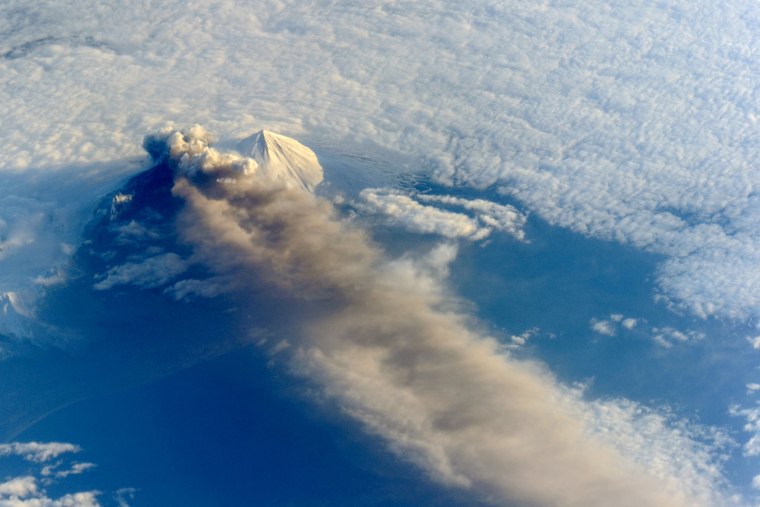
Astronauts aboard the International Space Station captured this stunning view of an ash plume streaming from Pavlof Volcano on May 18. The volcano began erupting 10 days ago in Alaska's chain of Aleutian Islands, about 625 miles (1,000 kilometers) southwest of Anchorage.
LiveScience reports that "the volcano's ash cloud has reached as high as 22,000 feet" — which is still at least 200 miles (320 kilometers) below the space station. Feast your eyes on additional orbital views of the volcano from NASA's Earth Observatory and the Gateway to Astronaut Photography of Earth. And if you think Pavlof looks impressive from outer space, check out the amazing perspectives from the Alaska Volcano Observatory.